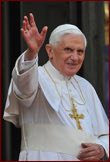Dr. Utr. Iur.
Frank
Van den Broeke
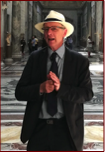
To book an authorised guided tour with me: .... Click here
Wine & Dine: ... Click here
Where to buy your tickets ... ? Click here
Vatican Gardens
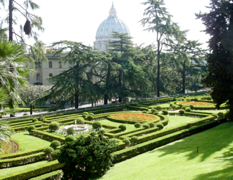
I love the gardens...
I am living in Rome since 1989, and I visited the Vatican Gardens only once before I became an official guide of the Vatican Museums. Yeah, I’ve seen them, and that seemed to be enough. There is so much more to discover in the city. But how wrong I was ! I really have to thank the Direction of the Vatican Museum to give me the opportunity to become a member of the big family of people who are the dedicated guides of the Vatican City. Those experienced guides opened for me a total different view of something that are only shrubs and trees, and now, I would like to return daily. Thank you Vincenzo, Isabella and Emanuela ...…
In my approach of the Gardens, I like to find the humanity of the many popes, who created this oasis of peace as a counterweight for the pressure of their office. A bit of research and I found little stories that I weaved into the garden, often lines of Pasquino, one of the talking statues of Rome, who told the government what the people in the streets were thinking. I hope you enjoy it.
In Roman time this area was outside the city, some heights were suitable to quarry clay, and some of them grow grapes. The lower part was often inundated by the flooding of the Tiber, and in the summer reduced to swamps full with mosquitos. On the hill, Agrippina the Younger (mother of Nero), had a villa. Caligula, her brother created a small circus beneath. This one was enlarged by Nero, and the obelisk we have at Saint Peter’s Square is coming from the circus of Nero. Outside, at the beginning of the Via Cornelia was the cemetery were Saint Peter got buried.
In the 2nd century, a little shrine was built over the tomb of Peter: the Trofeo di Gaio. A modest burial on which, a hundred years after the martyrdom of the Apostle, a small funerary aedicule was commemorated by the presbyter Gaius at the end of the second century, as the historian Eusebius of Caesarea (Ecclesiastical History, 2, 25, 6-) 7 stated.

The Vatican Area during the centuries
O
Entering in the gardens on the Viale dello Sport, in distance we see the Monte Mario. Dante Alighieri described the view of it in the 18th Canto of the Hell. When people did the pilgrimage from Canterbury to Rome, from the Monte Mario they would have their first view on the Holy City and the Saint Peter’s Basilica. Today the hill is hosting the mast of the Vatican Radio.



E’en thus the Romans, 1 when the year returns
Of Jubilee, with better speed to rid
The thronging multitudes, their means devise
For such as pass the bridge; that on one side
All front toward the castle, and approach
Saint Peter’s fane, on the other toward the mount.
Nicholas III (1277-1280) of the Orsini family, and friend of Saint Francis, was the first pope to reside permanent in the Vatican, because non of the surviving documents of his pontificate were issued at the Lateran. During his three years of reign, he began constructing on the hills a residence: the citadel of the Leonine City. The whole idea was a square building with towers at the corners for defense, surrounding what is today the Cortile del Pappagallo. It should be strong enough to withstand a siege. He provided also water-tanks and granaries. It was where today is the Sistine Chapel. The pope also acquired the vineyards at the north of his palace, the Mons Sancti Aegidii. It became the first garden ! An inscription that was insert, can be found in the Capitol museums. (The Vatican, The Metropolitan Museum of Art Guide, Philippe De Montebello, 1983)
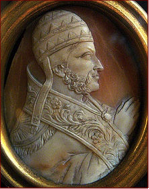
In those gardens Pope Nicholas III had a fruit orchard, a planned garden with large trees (viridarium), a lawn with fountain (pratellum), and the gate: Porta Viridaria. Outside that gate under Nicholas IV (12((-1292), his doctor, Simon of Genoa created a space for medical plants.
Simon of Genoa was maybe the first scientific botanist, translating arabic works in latin: his work, Clavis sanationis, (the Key of Healing) could be considered a medical dictionary rather than simply a glossary. The work consists of 6,500 entries in alphabetical order and is substantiated by Simon’s own comments. Simon mainly uses two terms to signify a medicament: farmakon and medicamen. Farmakon is a complex medicament, usually made up of various ingredients: a compound drug. However, when he refers to drugs, he generally chooses to use the current Latin term medicamen, indicating either a healing substance, a remedy, or an antidote. More of this in the last chapter about medical herbs in the Vatican.

On the right hand side we see the Belvedere Palace of Innocent VIII, (picture) built in 1484 and used as a kind of summer-residence inside the compound of the Vatican until 1582, when the popes moved to the Quirinal Palace. In the tower is the famous staircase of Bramante, but more about it in the chapter of the Necropolis of the Via Triumphalis of the Vatican.
In 1772 it was transformed in the Octagonal courtyard, where is held the famous Laocoon (1506) and the Apollo del Belvedere.
The Wall of Berlin

Before we really enter the Vatican gardens we find a piece of the Berlin wall. It was a gift from the Italian Marco Piccininni to the Vatican in 1994. Mr. Piccininni acquired this piece of wall in an auction of wall segments in Monte Carlo 1990. The wall segments show those part of Sanct-Michaels-church from Berlin as a painting, which were hidden through the wall. The segments were originally part of the wall at Waldemarstreet, located on Waldemarbridge. The illusionary painting ("Mauerdurchblick") on the segments was made 1986 by Yadegar Asisi, initiated by the architect Bernhard Strecker. Hints on these wall segments in Vatican Gardens were also given by Paul Hofmann in 1997.


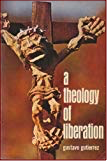
Often, it is said that St. John Paul II was the man who took down the Berlin wall by his early support of the labor movement of "Solidarność" in Poland. But for doing so, he needed a theological base. That was offered by Card. Joseph Ratzinger as the head of the Congregation of faith in 1984 in his IV,15, In the 1970’s, the catholic church was divided: on the one hand we had the movement of the extreme conservative Mgrs Lefèvre in France, on the other hand a very fast upcoming and popular movement in Latin America with the Theology of liberation with among them Sandinista priests-politicians, Gutierrez, Boff, Kung and many more. Karl Marx and his theory of the battle between classes was applied in the religious field. People should stand up against injustice, even if it was needed to use violence. Were there not enough examples in the bible ? Moses and many others? But the use of violence against the usurper is against Catholic faith. The Roman catholic church was risking a new schisms, were Latin America could walk out of the Church.
There was a growing risk that it could erupt in violence battle between the poor people in Latin America and the ruling class. It is not the farmer who produces drugs in Colombia for the Medellin-cartel who is the sinner, but the structure: the drug cartel with a.e. Pablo Escobar, that forced the farmer to cultivate drugs and nothing else and keep in that way those farmers in slavery. The answer of the church came in by Card. Ratzinger by enlarging the concept of sin. Following the tradition of Saint Paul and Saint Augustine, sin is a personal matter. Now, also a structure can be sinful. This position that a structure can be sinful, made it possible for Pope John Paul II to encounter Gorbatjov in the Vatican, telling him that he was a good man, but the structure that he represented - communism - was evil. I would say, that was the first stone that came out of the Berlin Wall, and it’s deconstruction began only a few years later: November 9, 1989 (built August 13,1961)So, I believe, Cardinal Ratzinger took out the first stone of the Wall !!! What follows is an extraction of the Instruction of Card. Ratzinger in 1984.
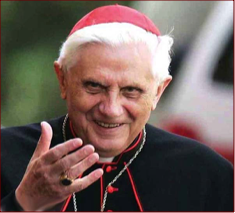
IV,14. Consequently, the full ambit of sin, whose first effect is to introduce disorder into the relationship between God and man, cannot be restricted to "social sin." The truth is that only a correct doctrine of sin will permit us to insist on the gravity of its social effects.
IV,15. Nor can one localize evil principally or uniquely in bad social, political, or economic "structures" as though all other evils came from them so that the creation of the "new man" would depend on the establishment of different economic and socio- political structures. To be sure, there are structures which are evil and which cause evil and which we must have the courage to change. Structures, whether they are good or bad, are the result of man's actions and so are consequences more than causes. The root of evil, then, lies in free and responsible persons who have to be converted by the grace of Jesus Christ in order to live and act as new creatures in the love of neighbor and in the effective search for justice, self-control, and the exercise of virtue.
I,4. Consequently mankind will no longer passively submit to crushing poverty with its effects of death, disease, and decline. He resents this misery as an intolerable violation of his native dignity. Many factors, and among them certainly the leaven of the Gospel, have contributed to an awakening of the consciousness of the oppressed.
I,5. It is widely known, even in still illiterate sections of the world, that, thanks to the amazing advances in science and technology, mankind, still growing in numbers, is capable of assuring each human being the minimum of goods required by his dignity as a person.
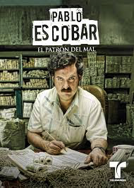
VI,4. To some it even seems that the necessary struggle for human justice and freedom in the economic and political sense constitutes the whole essence of salvation. For them, the Gospel is reduced to a purely earthly gospel.
VI,5. The different theologies of liberation are situated between the 'preferential option for the poor', forcefully reaffirmed without ambiguity after Medellin at the Conference of 'Puebla' [19] on the one hand, and the temptation to reduce the Gospel to an earthly gospel on the other.
VII,8. It is true that Marxist thought ever since its origins, and even more so lately, has become divided and has given birth to various currents which diverge significantly from each other. To the extent that they remain fully Marxist, these currents continue to be based on certain fundamental tenets which are not compatible with the Christian conception of humanity and society. In this context, certain formulas are not neutral, but keep the meaning they had in the original Marxist doctrine. This is the case with the "class-struggle."
The English garden

Charlemagne and the Sack of Rome in 846 by the Saracens


Originally, it made the 8th hill of Rome, but was outside the boundaries of the old roman city. Agrippina had a villa on this site, and Caligola built a circus. This was increased by Nero. It was in this circus that we had the first persecutions between 64-67 AD. Outside the circus was a cemetery were saint Peter was buried; the Popes started the lay-out of the gardens after their return of Avignon in 1378.
For the thirsty, the little fountain la Zidella, with excellent (sparkling) water from the Aqueduct of Paulus V, Borghese (the former aqueduct of Trajan)

View of the Mosaics of the Baths of Caracalla in the Pius Christian Museum
For the thirsty, the little fountain la Zidella, with excellent (sparkling) water from the Aqueduct of Paulus V, Borghese (the former aqueduct of Trajan)
This brings us to the Paolin Museum, originated by Paulus VI in 1965, when the collection of Saint John in Lateran was transferred to the Vatican City. Through the glass we can admire the beautiful mosaics coming from the baths of Caracalla.
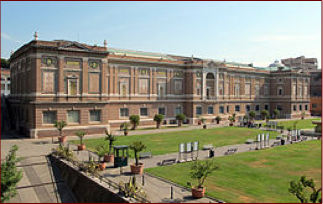
This museum consists of three parts: 1. Pius Christian Museum; 2. The Profane Museum and 3. the Missionary and ethnological museum.
After this brief introduction, we entering the proper gardens. Those are divided in three parts, as we will see in successive order. On the left we see (and only one wall is left) a square “secret garden” called “The Square Garden” (today guides are explaining the Sistine Chapel here). This secret garden was build by Paulus III, Farnese (1534) and was used for private walks.
The word “secret” in those days had a total different meaning than today. By calling something a secret garden or a secret archive a.s.o., in the 16th Century they intended a private garden, archive. One side of the secret garden today is walled by the 1932 neo-renaissance building, housing today the Pinacoteca, the painting gallery. We can see the names of varies artist in the wall: Giotto, Raphael .… The secret garden houses today also the “Caffeteria” and “the museum of the Carriages.”
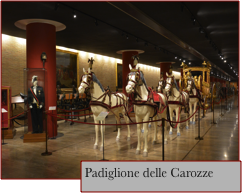

Hibiscus moscheutos
You can now enjoy these gorgeous flowers in your northern home. Sensational winter hardy variety of a tropical favorite. Huge, exotic flowers up to 8" across. Blooms mid summer to frost with up to 50 flowers on a single plant. Easy to grow, needs little care. Full foliage shrub-like plants 4-8' tall. Plant 2-3' apart in full to partial sun. Deer resistant. Strong, field-grown plants shipped. Mixed colors only: Red, pink, white, maroon and salmon.
In the alley that runs along the secret garden and below the English garden, we will find a beautiful flower: the giant perennial hibiscus. Walking in the English garden, that looks more like a forest of Robin Hood -a wild garden-is a really pleasant walk. Everywhere are emerging small and large fountains, bringing water in from the Aqueduct of Trajan, nice fresh water from the lake Braciano- as was agreed in the Lateran Pacts of 1929 in art.6 (later arrived a dispute as what to do with the waste water ! Can it go to Italy, another country?) A wild flower, very common in Rome is the acanthus is everywhere present. Is it a really strange plant: It flowers in early spring and soon after dies when the whole nature start to come alive. On the root, a little leave will wait, and when nature is going to it’s winter-sleep (January-February), the acanthus starts to grow. Therefore the acanthus became for the Greek the symbol of eternal life, and was used as model for the Corinthian columns.
On the little lanes in the little english forest we find lovely roman statues and ancient artifacts. They are fitting extremely well in this surroundings of the forest.
Trees, plants and shrubs in their natural state, as it would have looked in the open country. Therefore it’s called “Il Boschetto”, the little forest.
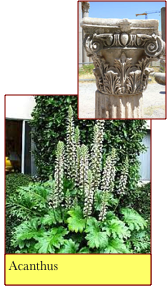

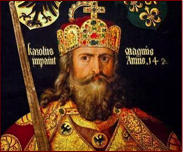
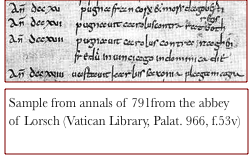
On Christmas 800, in the old Saint Peter’s Basilica, Charlemagne was coronated. There are a few testimonies of the ceremony. The first one by Eginhard, The life of Charlemagne, 28, (the author is also know under the name Einhard) The way it is written is similar to the style of the (gossip) writer Suetonius, who described the life of the Caesars, and how a good ruler should be reluctant for receiving the crown. You should at least say twice that you are not worthy for receiving the crown and then … humble accepting it.
In the version of Einhard, it looks that Charlemagne was unaware of the fact that Pope Leo III wanted to coronate him. This version gets contradicted by The Annals of Lars or Annales laureshamenses, a second source of his coronation.
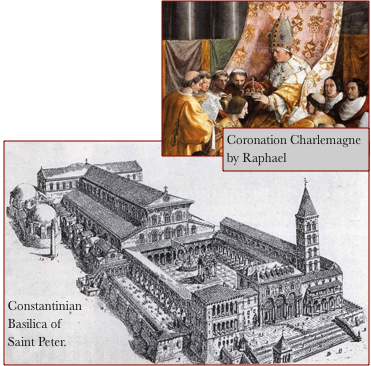
Towards the end of the English garden, we see the first wall of the Vatican City. This wall was already there when Charlemagne was coronated on Christmas Day 800 by pope Leo III in the old Basilica Saint Peter. That night, the church must have looked incredible. Only a few years earlier, pope Hadrian I had put expensive decorations in the Basilica built by Constantine.
The entire floor was plated with silver, the walls with gold. A balustrade of gold (1328 pounds in weigh) was only a part of it. An enormous candelabrum in the size of a cross with 1365 candles illuminated the iconostasis with 6 silver statues. This superb decoration would vanish only a few years later … Andrew G. Boston wrote a very extensive book in 2005 on the topic of ”The Legacy of Jihad. Islamic Holy War and the Fate of Non-Muslims,”
In 846, a few years after the saracen invasion of Sicily, the muslim jihad moved towards Rome. Their incursions in the earlier years in the East Roman Empire were more raids in order to find spoilage, than a proper conquest. However is was extremely bloody. Every Christian on their way was killed. Whatever was outside the walls of the City, was heavily damaged, including the old Saint Peter’s Basilica and Saint Paul outside the walls.

Pope Leo IV, after the Sack of Rome by the Saracens, decided to protect the Vatican area by building a wall (look up link) of 12 meter high with 44 defense towers. The works took 6 years to complete. From that day the Vatican City is also known as the “Leonine” city. This wall would protect the Vatican for future Islamic Jihad. Below a view as we have from Raphael in the rooms in the Vatican. And now, we come to the first wall that surrounded the Vatican. Still pretty well intact with it’s corner-towers and and we are going through the gate “Vignaccia”, on one side we are seeing some work-shops. Vignaccia stands for “Bad Wine”

Pope Leo XIII wanted a vineyard over here, but wasn’t very successful. In this tower the popes were prisoners after the unification of Italy in 1870 until the Pacts of St. John in Lateran. A little chapel of Our Lady with child was built in order for protecting the Popes during their captivity in prison in the tower …The little shrine is also called La Madonna della Guardia, a gift of Genova to pope Benedict XV, who originated from that city.
When the popes were prisonner in the Vatican: the Roman Question

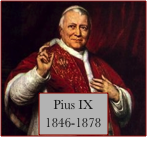
Pius IX (1846-1878)
1870, Rome became the capital of the united Italy. The Pope, after ruling for over 1100 years (from 756 AD-1870) over the pontifical states was loosing day after day more of his territory. On the street walls arrived graffiti/comments of Pasquino, the most (in)famous talking statue of Rome, that the new police forces cancelled without understanding the meaning of it: “NON PIOVE” (IT DOESN’T RAIN). The real way to read was: “NON PIO (IX), (But) V(ittorio) E(manuele) (King)!!” Six hours on September 20, 1870 were enough to break the wall of Porta Pia and marked the beginning of the pope as prisoner.
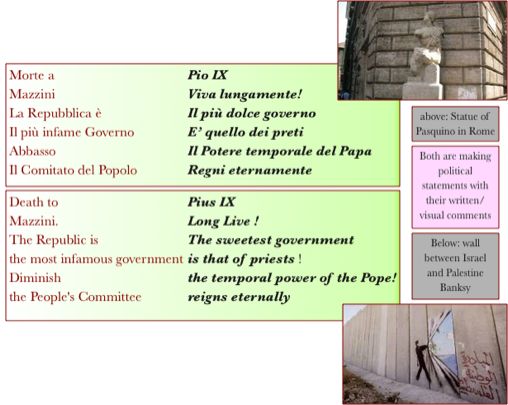
There are two ways to read the following commentary of the feelings of the romans by the talking statue Pasquino: Or you read it vertically (against the new government) or … horizontally (against the temporal power of Pope Pius IX !) You can compare those political comments on the street with the visual works of Banksy today !!!
Five popes would be prisoner in the Vatican: Pius IX (until 1878), Leo XIII (until 1903), Pius X (until 1914), Benedict XV (until 1922) and Pius XI until the Concordat or Pacts of Saint John in Lateran with Mussolini on February 11, 1929. Behind the wall was the “summer-residence” of the popes when they were prisoner of the Vatican city in the 19th Century: from 1870 until 11 february 1929. It was called the period of the “Roman Issue”. After 1870 the Holy Father became a self-declared prisoner of the Pontifical Palace. Even the balcony of the Saint Peter’s Basilica was out of use, being occupied by the new government. Nonetheless, the Romans approved the courage of Pope Pius IX in his resistance to the new government by saying: Pio Nono, sei buono, Ma-Stai !! (Pius IX, You are [a] good [man], but [please] stay [put].

This was of course a game of words with his last name: “Mastai”. The pope, being prisoner in the Vatican City called it his “little Castel Gandolfo”. An other saying was (in Italian): “Per mantenere la fede ha perso la Sede” , translated: “By maintaining his faith, he lost his seat”! What the Holy Father for sure missed the most, was his excellent white wine of Frascati. So, he decided to create a small vineyard just outside the entrance of the French garden. The was called “ Vignaccio” … translated: “Vinegar” !!! It was for sure not a “Chateau Neuf du Pape” !
And so, after 1100 years the pope lost his temporal power. It is to be said that in the last years of it’s existence, the Pontifical States had lost the train of the industrial revolution and was far behind a combination of industrial powers of the north of Italy and the rest of northern Europe. The final blow was given when the French troops, who protected the Pontifical States eventually withdrew in 1870 during the Franco-Prussian War. Italian troops entered Rome on September 20, 1870; after a plebiscite in October of that year, it became the capital of Italy. The Papal States had finally come to an end.
It is be said, sometimes, the Providence is working in very mysterious ways. The “Roman Issue”, when the popes were seen as a prisoner of the Vatican is often seen as a black page in the history. The liberals in Europe taught it as the end of the influence of the Church over the common people. But, the Popes, finally released from the burden to govern like a king, could concentrate themselves more on spiritual matters. And so, ay after day, the moral authority of the popes increased.
The most important thing happened under the reign of Pope Pius IX was during the Vatican Council I in 1870: the proclamation of the dogma of the infallibility of the Pope (SESSION 4 : 18 July 1870 - First dogmatic constitution on the church of Christ- Chapter 4. On the infallible teaching authority of the Roman pontiff)
What follows is an extract of the Vatican Council I about the dogma.
◦ we teach and define as a divinely revealed dogma that
▪ when the Roman pontiff speaks EX CATHEDRA,
▪ that is, when, in the exercise of his office as shepherd and teacher of all Christians, in virtue of his supreme apostolic authority, he defines a doctrine concerning faith or morals to be held by the whole church,
▪ he possesses,
▪ by the divine assistance promised to him in blessed Peter,
▪ that infallibility which the divine Redeemer willed his church to enjoy in defining doctrine concerning faith or morals. Therefore, such definitions of the Roman pontiff are of themselves, and not by the consent of the church, irreformable.
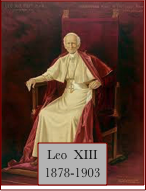
Leo XIII (1878-1903): Encyclical Rerum Novarum May 15,1891, Leo XIII is known for his social reforms and his recognition of the rights of the worker. During his reign the Roman Catholic Church achieved an international prestige it had not enjoyed since the Middle Ages. In those years their were no Catholic political parties in Europe. All over Europe we had anti-clerical anti-papal and anti-Church movements (remember the Kulturkampf of Bismarck and of the liberal new founded states in Europe: Belgium, France, Netherlands). But the raise of the Socialists movements made those liberal governments seeking support from the Church. How those feelings against the upcoming socialist movements was, is perfectly portrayed in the 1963 movie of Visconti: The Leopard. (IL Gattopardo): the battle and tensions of the working class against the nouveau-riche and the liberals. In Rerum Novarum, Pope Leo XIII demanded for the working class minimum wages and more social reforms such as the right of private property, an approval of labor unions and cooperative organizations.
The letter's value lay much more in its accurate prediction of social reforms which, if implemented, might have averted such later developments as the Russian Revolution and the rise of Soviet bolshevism. (In some countries, like Belgium, the church hierarchy itself delayed the publication of the Encyclical message, and so choose the side of the ruling class)
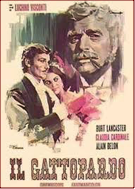
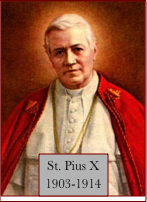
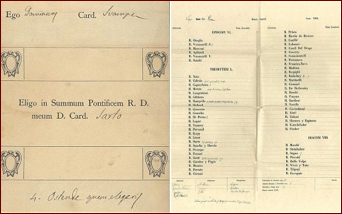
Saint Pius X (1903-1914)
Most of his reforms were focused on the spirituality of the Catholic Church itself. You can compare the reforms he brought within the Catholic Church with the great reform of the Council of Trent.
1. Reform of the Papal election: abolished the possibility of some countries to have a the veto of exclusion (ius exclusivae) during the conclave by the Constitution Commissum Nobis (1904) (the veto of Franz-Joseph made that Pius X became the pope)
2. E Supremi apostolatus (1903) was his reform plan for seminaries in order “forming the clergy to holiness. Further the formation should have a philosophic Thomistic base followed by study of the Bible.
3. Promoting frequent and daily communion. The pope also laid out guidelines on the age of children who are to be admitted to Holy Communion. Pius said, “The age of discretion for receiving Holy Communion is that at which the child knows the difference between the Eucharistic Bread and ordinary, material bread, and can therefore approach the altar with proper devotion.” 4. The Institute of Sacred Music (1911)
4. The promotion of biblical studies for the clergy
5. He instituted reforms in the congregations, tribunals, and offices of the Curia through his Apostolic Constitution Sapienti Consilio (1908).
6. The canon law codification (even approved only in 1927 by his successor.)
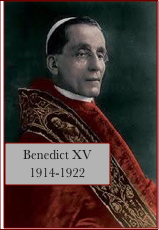
Benedict XV (1914-1922): A pope for peace !
On December 7, 1914, in the first year of WW I, Pope Benedict XV suggested a temporary cease-fire for the celebration of Christmas. The warring countries refused to create any official cease-fire, but on Christmas the soldiers in the trenches declared their own unofficial truce. His words were: "that the guns may fall silent at least upon the night the angels sang."

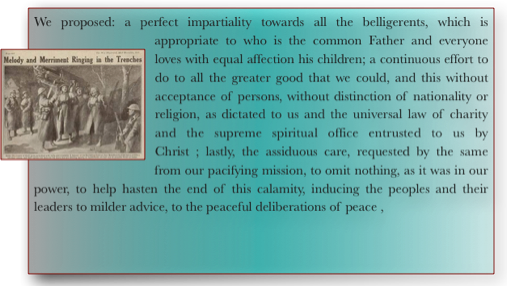
Paul McCartney made in 1983 a number one Christmas hit about it.
During the whole duration of World War I, Pope Benedict XV kept a strict neutrality between the belligerent parties. During the war he asked for support for all the victims, no matter what their nationality was, something that often was not appreciated by the allies.
His Apostolic Exhortation of 1917 , made in the last year of the Great War, laid the base for the League of Nations that President Wilson tried to get trough…. with no success.
Pope Benedict’s 1917 plan included significant arms reduction; arbitration to settle disputes between countries; freedom of the seas; no reparations except in special cases; restoration of the territorial integrity of Belgium and the return of other occupied territories, including German colonies; peaceful settlement of territorial conflicts; and restoration of independence to Poland, Armenia and the Balkan states.
Those were the conditions to halt a war that had become “a useless massacre” to prevent the “recurrence of such conflicts”. The Apostolic Exhortation, based on pacific resolving problems between states, became later the blueprint for the League of Nations of the American president Wilson. The predecessor of the United Nations. Unfortunately, President Wilson and the other allies in the Treaty of Versailles were more belligerent and wanted harsh reparation from Germany. It would cripple the country for years and creating the ferment for the second Word War. Anti-catholic and anti-papal feelings in many European states (Belgium, France, Italy) made the Exhortation only a strong verbal protest. Being properly applied, it would have avoid the second Word War ! Similar, the League of Nations, promoted by Wilson in Europe, didn’t get the necessary ⅔ majority in the American Senate. American were afraid to loose their sovereignty.
The international efforts of Pope Benedict XV, a “prisoner”, made however that the Holy See had again a voice in international matters, and laid the base for the future recognition of the Vatican under the Treaties of Saint John in Lateran in 1929, when Mussolini recognized the Vatican as an autonomous country.
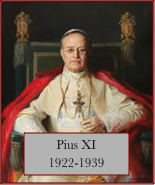
Pius XI (1922-1939) The Last prisoner of the Vatican
And so, we are arriving at the last pope who was prisoner in the Vatican.
In his first encyclical on Catholic Action, he promoted the collaboration of the laity with the hierarchy in the church’s mission. In the area of arts and sciences, he reorganized the Vatican Library, founded the Pontifical Institute of Christian Archaeology, built the Pinacoteca to house the Vatican’s picture collection and moved the Vatican Observatory to the papal palace of Castel Gandolfo. In 1931 he installed radio in Vatican City and in 1936 founded the Pontifical Academy of Sciences.
Pius became known as the Missionary Pope, requiring all religious orders to engage in missionary work. The number of missionaries doubled during his reign. Pius will long be remembered for his concordats devised to ensure the Church’s freedom to work in all the countries after The Great War. Most famously, Italy in the 1929 Lateran Treaty, following three years of bargaining with the Fascist government of Benito Mussolini. This treaty ended the dispute that had existed between the Church and Italy from 1870. The recognition and acceptance of Italy’s sovereignty removed any possibility that former territory would be restored to the Church. It allowed the Church to move forward solely as a spiritual authority from the smallest state in the world, Vatican City State.
The treaty guaranteed the pope’s liberty, recognized canon law and Catholicism as the state religion. Financial compensation for the Papal States totaled 1,750,000,000 lire, an endowment that put the papacy on a secure financial footing. The treaty also allowed for the teaching of Catholic doctrine in state schools. Mussolini’s interest in these negotiations centered on his awareness of the importance of the Catholic faith to Italians rather than any interest in peace and reconciliation.
Pontifical Academy of Science the Vatican Radio, on , the full speech
Encyclical With deep anxiety - mit Brennender Sorge
Relationship with the Jewish community
Treaty of St. John in Lateran on 11 February 1929.
Conclusion
During their prison, the popes with visionary, approached spiritually the problems of the 20th Century.
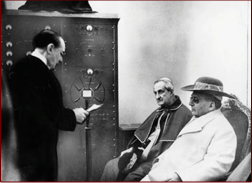
The French Gardens

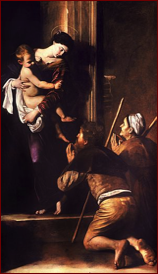

Those gardens, very symmetrically consist not of flowers but mostly of threes and shrubs. A bas-relief in the wall was a gift of Savona (Liguria) to Pope John Paul II. A modern work inspired on the “Madonna dei Pellegrini” di Caravaggio in the basilica Sant’Agostino in Rome.
Here at the beginning of the French Garden, we can see the preserved original wall of pope Leo: “le mure Leonine”. In the last room of Raphael we see the battle in Ostia in 849 against the Saracens.
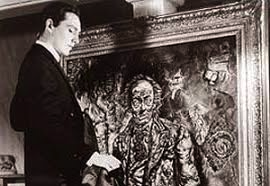
But what takes the eye, is the exact copy of the grotta of Lourdes. An other donation of France.
Very few people are aware that Oscar Wilde converted to Roman Catholicism at the end of his life. After being imprisoned for homosexuality, he came in exile to the continent and to the city he loved the most: Rome in 1900 under Leo XIII.
Wilde was a “broken” dying man by the time of his conversion in Paris in 1900. It was Wilde's most loyal friend Robbie Ross who – having spent months with him in Rome and Paris – called the priest. And it was he who witnessed the baptism of Oscar Wilde and his entry into the Roman Catholic Church. Newly understanding that his beauty will fade, Dorian expresses the desire to sell his soul, to ensure that the picture, rather than he, will age and fade. The wish is granted, and Dorian pursues a libertine life of varied and amoral experiences, while staying young and beautiful; all the while his portrait ages and records every sin.
This is the whole meaning of the Immaculate conception: getting old and dying is non a consequence of life, but our mortality is caused by the original sin. Mary is immaculate. Mihelangelo will use this concept in his pietà and in the Sistine Chapel with Adam & Eve.
A little stone with the inscription Zakopane, refers at a polish town was a gift to Pope Pius X. John Paul II’s name was added in the Giubileo of 2000.
But the main focus of the French Garden, as said is the copy of the Grotta of Lourdes, where Mary appeared to Bernadette Soubrioux.

On one side we are seeing the mosaic with Pope Leo XIII, on the other side the bishop Schoeffer. This copy was a gift of France to pope Leo XIII. The altar is the original of the sanctuary in France and was a gift to the Apostolic Nuntius in France, Card. Roncalli, who in the same year became pope John XXIII in 1958.
On the left, approaching the “Grotta” is the “tree of Judas”.
This part of the garden is very pretty in the spring in May, when celebrations in honor of Mary are taking place here.
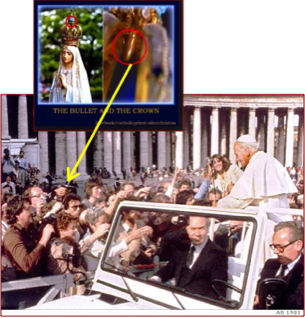
And so we enter in the Viale delle Ulive. A statue of “Our Lady of Fatima” stands here, remember how see appeared to local children on May 13th, 1917. But also the name of John Paul II is here: on the day of Our Lady of Fatima, in 1981, he was shot on St. Peter’s Square and miraculous, by divine intervention of Our Lady, he survived it.
On the left hand side, we see a small fountain, and is also an entrance to the Secret Archive of the Vatican City. Originated by Nicolas V, extended by Sixtus IV, and finally became the Vatican Library by Sixtus V.
On the left we have first the “fountain of the frogs” and then we have an other memorial Statue of “the Madonna of Guadaloupe”, made by the italian artist Ponzanelli, and holding a relic. A gift to Pope Pius XI in 1937. Our Lady appeared to a native and spoke to him in his language. Juan di Sumaraga was the bishop of Mexico, who first didn’t believe the apparition. Our Lady told that there should be build a convent. A second vision of the Madonna, gave the native some flowers. Where they felt down, there was the imprint of the feet of the Virgin Mary.


On the other side on the highest point of the Vatican City (78 m over sea-level) was originally a tennis court, today the Heliport. On the path ancient terracotta pots adorned with the papal coat of arms and filled with stunning azaleas (Rhododendron L. sp.) and a majestic camphor tree (Cinnamomum glanduliferum Meissn.)
At the end of it, we notice also a statue of Our Lady of Chestochova, Poland. Another gift to John Paul II.
Turning to the left we see the medieval Defense Tower of Nicolas IV of the 14th century. It was extensive restored under John XXIII. Even if the Vatican City doesn’t have any hotels, this is today a guest-room for special guest. Among them the Patriarch of Constantinople, Athenagoras and his successor Bartolomeus. Also the American president Bush stayed here when visiting the Vatican. The Tower is dedicated to St. John: over the entrance door we see Saint John Evangelist and Saint John the Baptist; above the lion of St. Marc in Venice, the city where Card. Roncalli was patriarch before becoming pope in ’58.
John XXIII was immensely loved by the common people. For the first time Christianity had a spiritual father who didn’t came from one of the famous italian noble families. He was the son of a poor Montanara, a shepherd in the mountains of the north of Italy. He was elected, because .... harmless and aged. But that man changed the Church by, on his old age and already ailing of a cancer, opened the windows of the Vatican to the world by calling together the Second Vatican Council. His direct approach with the people made him of course also much more vulnerable for attacks of journalists as today Twitter and Facebook can do. And then, there was a journalist, who wanted to know a bit more about the finances of the Vatican, asking the Holy Father: “And, Your Holiness, how many people are working in the Vatican?” On which came the speedy reply of John XXIII: “Just like in the rest of Italy, half of them ...!”
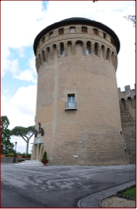
In front the reminder of a sanctuary of Our Lady on the Via Ardeatina, at 20 miles from Rome: it’s dedicated to Our Lady of Divine Love: Divin’Amore.
The beautiful olive threes we have here are coming from Puglia, in the south of Italy
The lovely wall with Ivy, had in the time of Pius XII, a kind of canapé, sheltering the Holy Father, when walking here, from the elements. There is a story: Pius XII was praying his breviary over here, when he saw a cardinal playing the ball with his niece. As soon the Holy father approached, the little girl went to her uncle cardinal and whispered something in his ear. Pius XII, asked the cardinal: “What was it that she whispered in your ears?” The cardinal, embarrassed, replied: “Oh Holy father, you know how children are, it was nothing of importance.” But the pope insisted to know it. And the cardinal, becoming almost as red as his dress said: “Your Holiness, she told me that You are ugly!” On which pope Pius XII, Pacelli, replied: “Yes, indeed, We are ugly !!”, using the majestic plural.
In distance we can see the Albanian hills with the summer residence of the popes Castel Gandolfo.
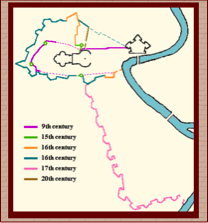


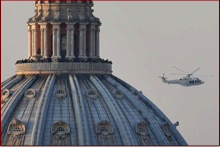

The Pope is the only one who has a pure white helicopter ... remember the white horse of the emperor ?
Above the name of the family: a triangle with an eye. In the “open eye of God” we can see Saint Peter’s Square, almost that the looking eye of God is protecting Christianity. From here you can also admire one of the eight smaller towers that surround the dome of Michelangelo.
Three famous artist were working on that dome: it started with Michelangelo (look design), who saw the tambour and the windows. And after his death,work was proceded in 1564 by Domenico Fontana and Giacomo della Porta.
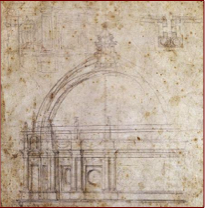
But eye-catching is the beautiful bell, a gift of the Marinelli Family to Pope John Paul II in concordance with the Jubilee of 2000. I invite you to listen once the Carillor concert of Jo Haazen in my country, in the city of Mechelen. The Flemish have a tradition that is going back centuries.
Cristo Lavoratore, Christ Operator, and the Vergin of Lujan, both works by Alejandro Marmo in 2014, made from recycled metal
Madre del Buon consiglio
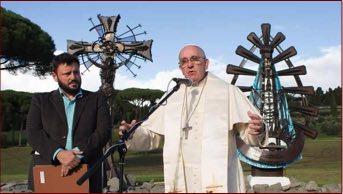
Pieces of old gates, rusty chains, scattered scrap metal. Put together they have the form of Jesus, hanging on the cross. Beyond form, substance. The Christ abandoned by all, even by the Father, lives again in those pieces abandoned and put back together by the whims of a young Argentine artist, Alejandro Marmo, a friend of Francesco, "the Pope's artist" they call him. "Christ the worker" is the name of the work that now stands out in all its repellent beauty in the heart of the Vatican gardens. Among well-kept lawns and hedges, ancient fountains and sculptures of distinguished artists, therefore also a ferrous Christ, like a punch in the stomach to remember that the Church of the poor that was in the dreams of John XXIII is the Church that Francis wants.
Turning the next corner, we entering in the Italian gardens, were perspective and natural twists (just like a maze, fountains ...) are the main ingredients.
At the entrance, a lovely ceramic on the wall of "Madre del Buon Consiglio"
It was following the heavy Argentine economic crisis of the Nineties that Marmo went to the future bishop of Rome full of resentment for Western opulence and, at the same time, eager for revenge. Bergoglio channeled his anger on a road of resurrection. Go, he told him, from the last, from the discarded. And make them rise again through your works. And so did Alejandro, using materials that the world discarded. Giving voice to the invisible through his creations. Every work has a thorn in its side, to remember that there is a world that has no voice, rights, nothing. Not only the villa miserias of Buenos Aires, therefore, but every periphery, every piece of the world discarded at any latitude has the right of resurrection. "My work in the gardens is a sign - Marmo explains - that reminds us of the Church or is for the poor, the last and the rejected, or it is not. So my art, grown up in Buenos Aires also thanks to a deep friendship with the then cardinal Bergoglio who first incited me to create from the suburbs, from the forgotten places, to approach the discarded, the excluded, the exploited of our time and help them to recover ". (Repubblica, 20 February 2015)
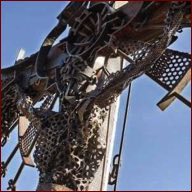

The Treaty of Saint John in Lateran, February 11, 1929
The Italian gardens

On the back of the Guest Tower Saint John, proceeding along the Leonine walls, we have a little shrine dedicated to Saint Theresa of Lisieux, a gift to pope Pius XI. She is the saint Patron of the Vatican Gardens, in the midst of a palm grove with a wide variety of species . Among these are a palm named cocos (Butia capitata Becc.), with scented sweet orange fruits, the elegant Washington palm (Waschingtoniafilifera H. Wendl.) and the great Saint Peter palm bushes (Chamaerops humilis L.), the only indigenous palm trees present on Italian soil.
Against the wall we can see the remains of the ancient roman road that lead the people to the Vatican: the Via Triumphalis and the Via Cornelia.
The holes in the wall were used for putting the scaffolding. (?)
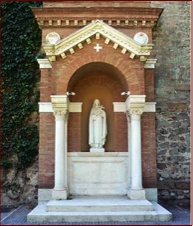
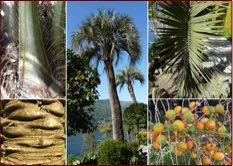
Palm named "cocos" Butia capitata Becc.

Waschingtoniafilifera H: Wendl
Saint Peter palm bushes Chamaerops humilis L.


On the lower level we can admire the Labyrinth garden and behind it the Vatican Railway station. Today only used for goods. But most are arriving at the Porta Sant’Anna in the wall of the Vatican City, were is also the Bank (IOR), the supermarket and the pharmacy. Today, the station is also used on Saturday for bringing pelgrims and tourist to the summer residence of the Popes: Castel Gandolfo.

A villa's outer peristyle in Roman time
Famous are the gardens of Pope Paul III Farnese in 1535 - the time that Michelangelo painted the Last Judgement -. However, I think that the gardens in those years where more beautiful than today. Today we know them as with evergreen plants of a variety of shades of green, silver, bronze or gold are manicured into geometric shapes. But never forget, when those gardens were made, way back in the first half of the 16th century, we are only 40 years after Christophle Colombus discovered America in 1492. For the first time, all those beautiful tropical flowers from Latin America, arrived in Europe.
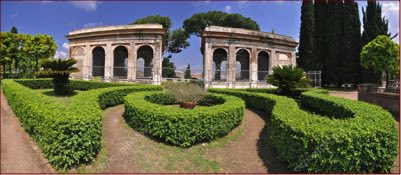

And the popes received from alll parts bulbs, tropical flowers, and what now is shades of green/grass, was often filled up with beautiful flowers.
But after the renaissance and baroque time, Italy declined and two other countries emerged with colonies: the Netherlands and the United Kingdom. Maybe, if you would like to see a proper Italian garden, you should look at one with the famous flowers of the English gardens of today. During the summers, the Vatican still fills the gaps with flowers.
Enter Text
Faith & Science: Ad decorem militantis Ecclesiae

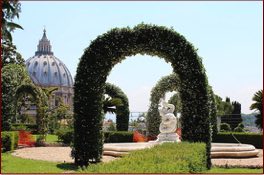

Almost opposite of the beautiful Italian garden, we have a little Mater Ecclesiae monastery. It began its life as the Vatican gardener’s house, but was established as a cloistered convent by Saint John Paul II in 1994.
Over the past years, different orders of cloistered nuns have spent fixed terms of three to five years in the monastery. The first community was the Poor Clares, then Carmelites, Benedictines and, most recently, Visitandine nuns.
After a short stay in the papal summer-residence Castel Gandolfo, it became the retiring home for emeritus pope Benedict XVI.
Pope Benedict said it was his intention to “devotedly serve the holy church of God in the future through a life dedicated to prayer.”
Moving on along gravel paths, amid a labyrinth of hedges, one encounters a colony of monk parrots (Myopsitta monachus Boddaert) which have happily nested there amid the branches of the cedar trees surrounding this area of the Gardens. These colourful birds have been nesting there a long time, having met with a favourable breeding ground thanks also to the abundance of food. Every now and then their screeching breaks the silence of the park. They can live between 25-35 years and reaching a height of 30 cm.



